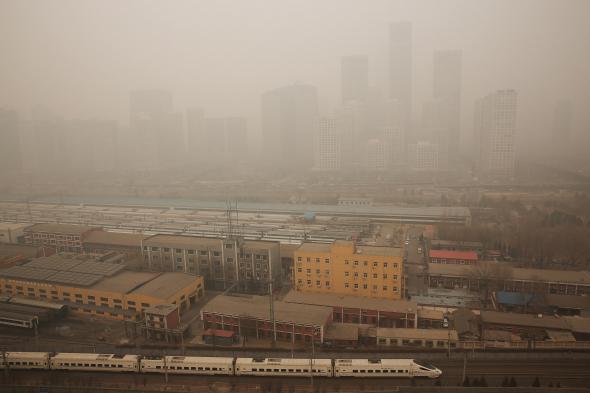With Beijing’s dense population and smoggy skies, it stands to reason that the Connecticut-sized city would be radiating an outsized environmental impact. But until now, we weren’t clear on just how bad it was.
Researchers from NASA and Stanford University recently estimated that the area directly affected by Beijing’s urbanization has quadrupled in size from 2000 to 2009. So while the area we call Beijing has remained roughly the same size, its environmental influence has grown far larger. These findings, published this week in the Journal of Geophysical Research: Atmospheres, draw on new computer models and data from NASA’s QuikScat satellite.
From 2000 to 2014, Beijing’s population grew from around 11 million to 21 million—today packing as many people into one city as there are in all of Australia (or North Korea or Syria). Strangely, the study didn’t measure the effect of more greenhouse gas emissions released by these additional residents and their vehicles. Instead, it only measured the growth of physical infrastructure—for instance, new roads and buildings.
The changes in the city’s physical infrastructure had massive, compounding effects on its weather and climate. New roads, for instance, reduce the ground’s albedo, its ability to reflect light and heat away from the city, and buildings prevented air from circulating freely. Those effects have resulted in higher temperatures and lower wind speeds. Researchers found that winter temperatures had increased in the city by 5 to 7 degrees Fahrenheit, while wind speeds were reduced by about 2 to 7 miles per hour, making the city air even more stagnant, according to the American Geophysical Union.
While Beijing is hardly the only major city dealing with these issues, the sardine-packed capital of China has become the poster child for out-of-control urbanization. Recently, its government has taken steps to curb its pollution and greenhouse gases, vowing to clean up more than 1,000 festering landfills and promote hybrid and electric vehicles. Unfortunately, neither will have much of an impact on the changes being wrought by the immense growth of its sheer physical infrastructure.
